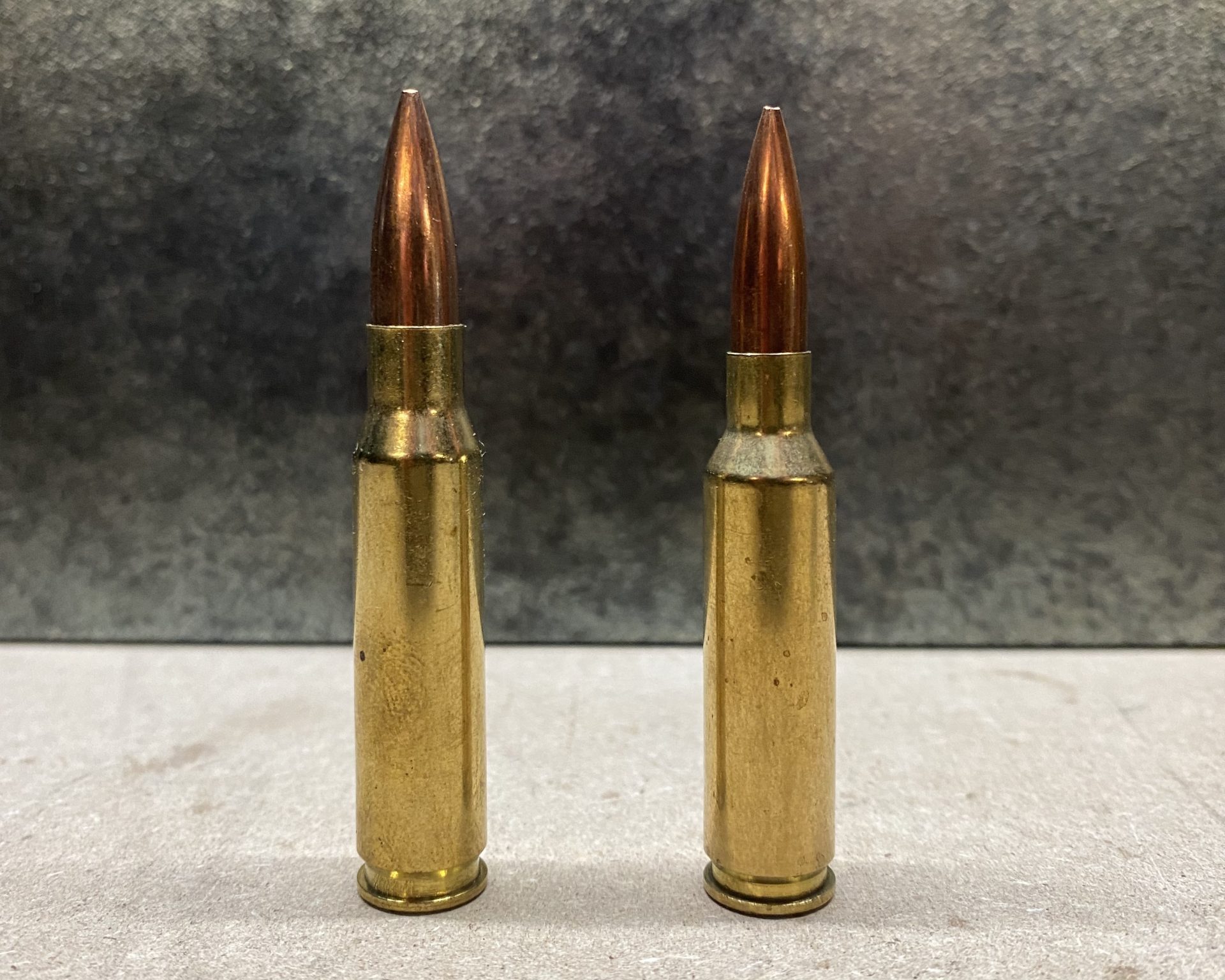
The United States Army adopted the M14 rifle and M60 machine gun in 1957. In what proved to be a very smart move, the Army also adopted the 7.62×51 cartridge that very same year. Without it, their M14s and M60s would have been useless.
Many of the roles the military once assigned to the 7.62×51 were gradually taken over by the 5.56×45. But 7.62×51 is still used in the M134 Minigun (you know the one: six rotating barrels, weighs 85 lbs). It also remains an official solution for taking out the kinds of enemies you really don’t want to get close to, like snipers and machine gun nesters.
At the time of writing, the 7.62×51 has been in service 27 years longer than the average American has lived. That’s just part of the reason why so many Americans love the 308 Win, which is essentially the commercial version of the 7.62×51. (The two rounds are so similar that you can safely fire one in a rifle chambered for the other.)
The 308 Win also gained a lot of traction in this country because it shares the same caliber bullet as the 30-06 Springfield, which served in both World Wars. This country has a special fondness for the .30 cal – which is part of the reason why the 6.5 Creedmoor is so interesting.
The 6.5 CM debuted half a century after the adoption of the 7.62×51. It was not conceived as a military cartridge at all, but rather as a long-range target shooting round. There has never been military surplus 6.5 CM ammo for sale. And instead of that .30 cal diameter bullet American handloaders and hunters know so well, the 6.5 CM’s bullet is 6.72mm in diameter: 0.2644”, instead of 0.308”.
There are many reasons why the 6.5 CM has become so popular recently. Is one of them better than the other? Let’s compare the two and see what we can’t figure out!
Cartridge Dimensions
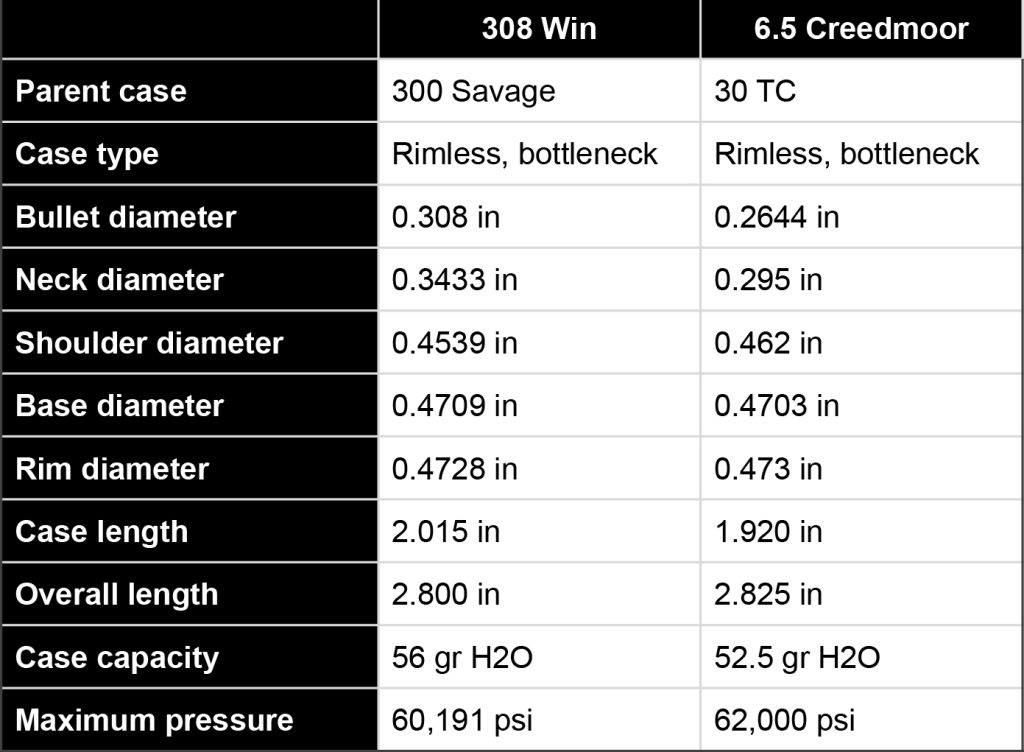
We’ll touch on the 6.5 CM’s lower-diameter bullet in a moment. For now let’s appreciate just how similar these rounds’ dimensions are. The 6.5 CM is only 0.095” longer. Its case capacity is slightly lower, but that doesn’t mean very much thanks to how far propellant technology has advanced between ‘57 and ‘07. The 6.5 CM’s 3% higher maximum chamber pressure might have had a more predictable effect on its performance – if it were loaded with the same bullets as the 308 Win, that is.
Let’s see how the 308 Win’s wider, heavier bullets fare in a ballistic comparison.
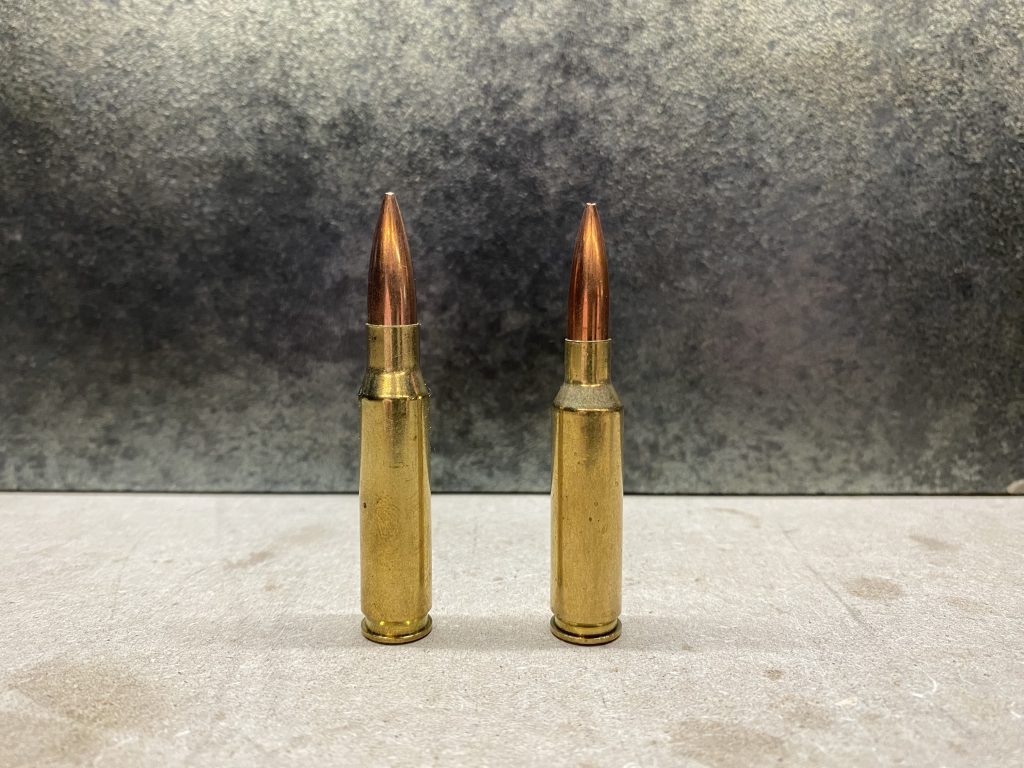
Ballistic Performance
A bullet’s ballistic coefficient is a measure of its ability to overcome air resistance. You can do any of three things to improve a bullet’s ballistic coefficient: make it heavier, make it narrower, or make its profile sleeker.
One of the reasons why the U.S. military chose to replace the .45 cal bullet with the .30 cal was the latter’s narrower diameter. The .30 cal’s resultant higher ballistic coefficient reflected its flatter and easier-to-aim trajectory.
But needless to say, 0.308” isn’t the narrowest diameter in the world. The 6.5 CM proves it with its 0.2644” diameter bullet. Its lesser girth does mean the 6.5 CM bullet tends to weigh lighter than what most 308 Win rounds have to offer. Even so, the 6.5 CM’s narrower bullets do consistently claim the higher ballistic coefficients.
Let’s compare the ballistic performance of a few somewhat analogous 308 Win and 6.5 CM rounds to observe how great a difference the 6.5 CM’s higher ballistic coefficient really does make.
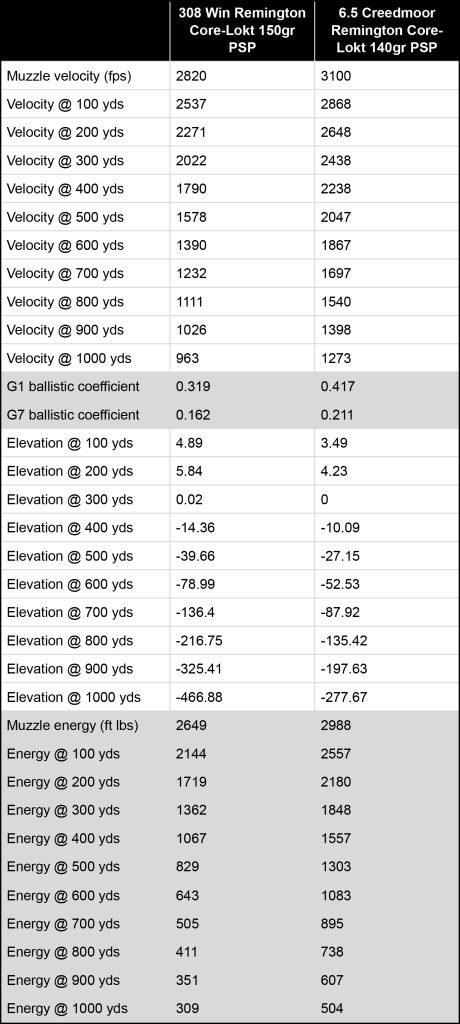
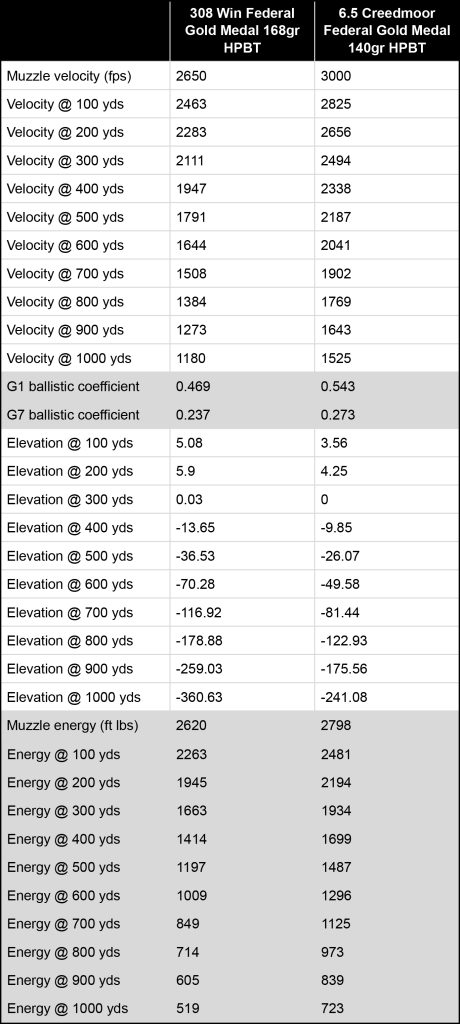
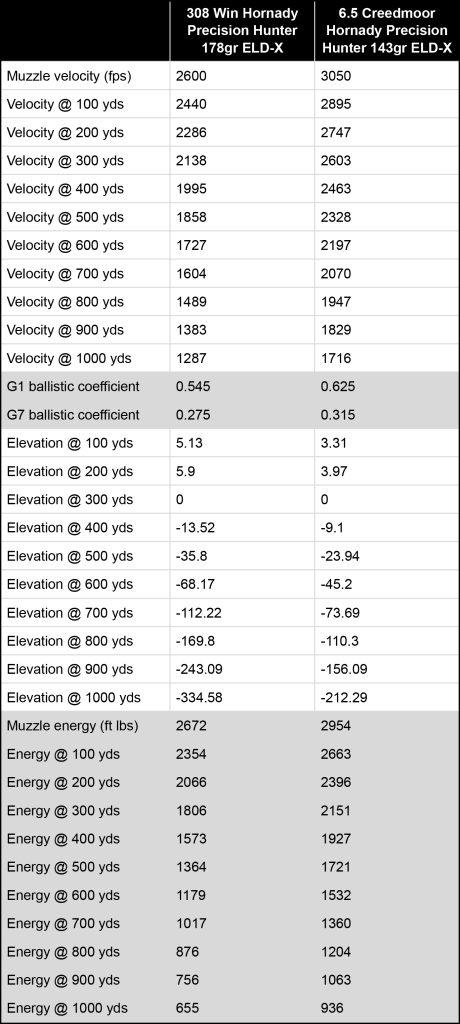
Our ballistic data isn’t exactly what you should expect to see out in the field. They’re just close approximations of how three 308 Win and three 6.5 CM rounds perform. Even so, you can easily see the 6.5 CM’s inherently superior ballistic coefficient coming out to play.
The 308 Win’s trajectory is hardly shaped like a rainbow. Its lower muzzle velocity and higherdrag bullet do produce relatively steeper bullet drop than the 6.5 CM, but that isn’t a hurtle a reasonable amount of target practice couldn’t overcome. Truth be told, both of these rounds would make fine choices if you were training to hit the coveted 1,000-yard target. But with less bullet drop to account for, you might find long-distance shooting with the 6.5 CM just a little bit simpler.
Also of note is the 6.5 CM’s ability to remain supersonic over longer distances. A bullet starts to wobble as a result of transitioning from supersonic subsonic velocity. By postponing transonic destabilization until farther downrange, the 6.5 CM gives the long-distance shooter yet another welcome advantage.
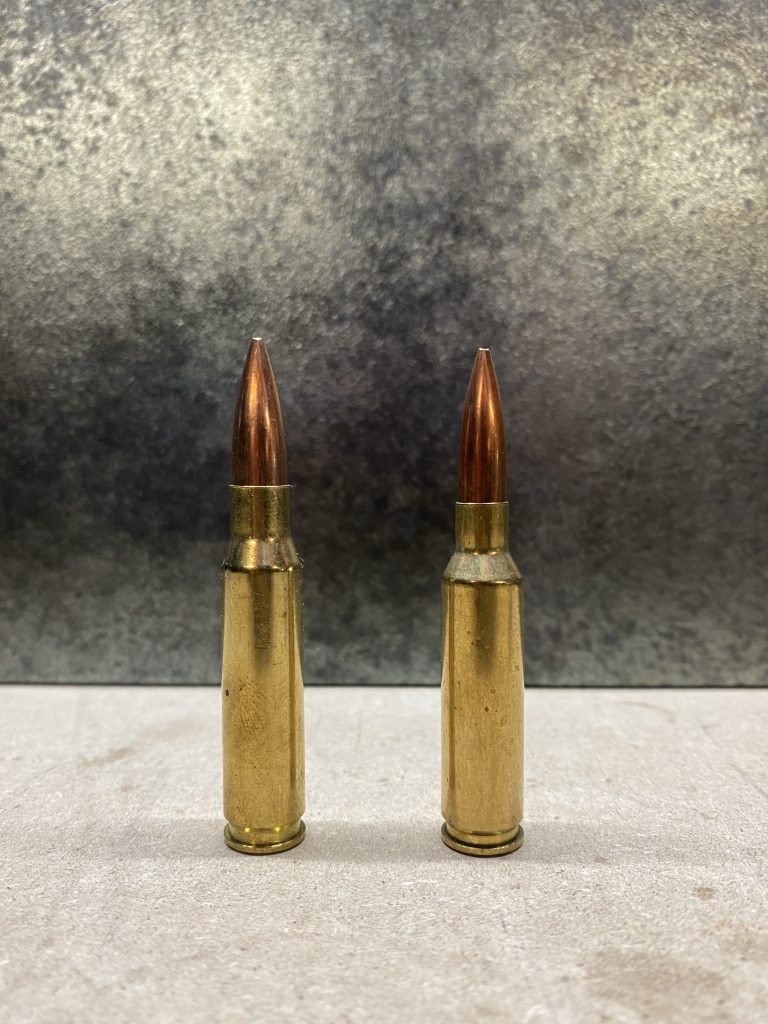
Stopping Power
“Stopping power” is a contentious concept. It doesn’t take the most important aspect of a bullet’s performance into account: the marksmanship of whomever fired it. You could kill an elephant with one well-placed shot from a 22 LR pistol, yet few would claim the 22 LR boasts very much “stopping power.”
All that aside, there are two fairly objective variables that contribute to a bullet’s stopping power: its sectional density, and the force with which it strikes its target.
Sectional density is a measure of how efficiently a bullet overcomes resistance from whichever medium it’s pushing against. In other words, it reflects how deeply a bullet can penetrate its target. The formula to calculate sectional density is Mass/Diameter2, but we’ll spare you a math lesson. Here’s the quick takeaway: the average sectional density of the three 308 Win rounds compared earlier is 160.63. For the three 6.5 CM rounds, sectional density is higher at 185.89.
As you can see from our data, the 6.5 CM rounds strike their target harder at any given distance. Its bullet may be lighter than the 308 Win’s, but the 6.5 CM’s significantly higher muzzle velocity and ballistic coefficient reflect its bullet’s ability to conserve superior energy at all practical ranges. Just one of many reasons why so many hunters consider the 6.5 CM perfect for taking whitetail.
Recoil
Many factors determine just how much recoil a shooter will actually perceive while firing any given round. Objective recoil energy isn’t the be-all and end-all, although it certainly bears consideration.
Let’s compare the recoil energy of the six rounds above. For the purpose of this comparison, we’ll assume each round has 39 grains of propellant and we are firing a 12lb rifle.
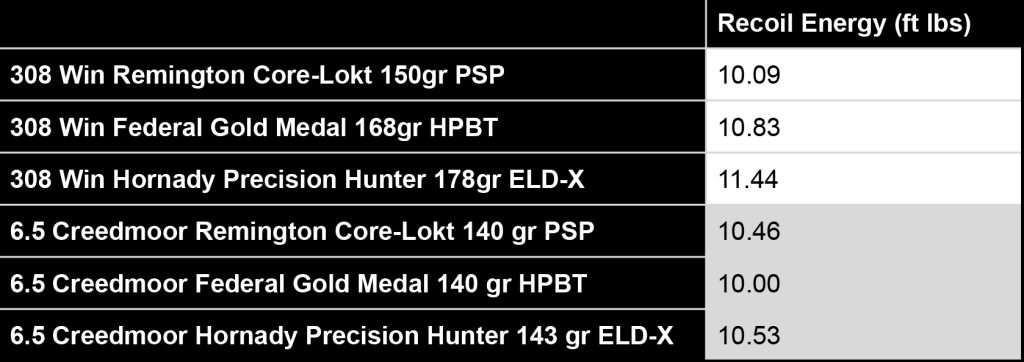
These numbers show that the 308 Win and 6.5 CM have approximately the same recoil energy. But at the end of the day, felt recoil is all that matters – and that’s completely subjective. General consensus holds that the 6.5 CM has about one-third less felt recoil than the 308 Win. Its rolling, gentle recoil is one of many features that make the 6.5 CM so appealing in the first place.
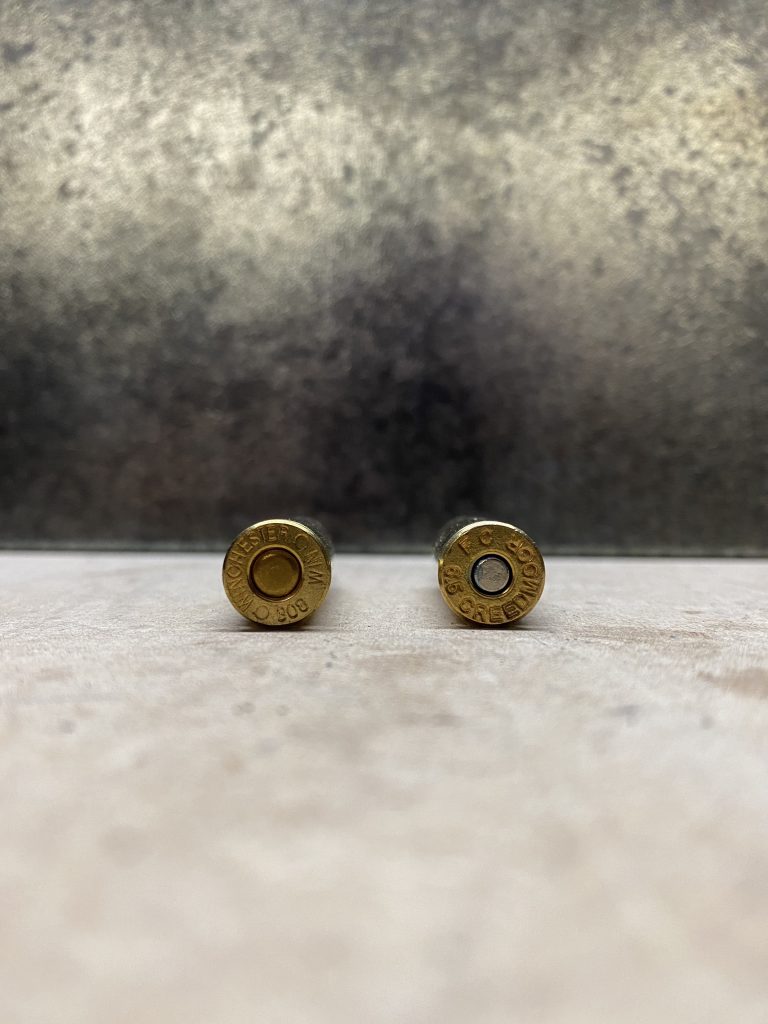
Price & Availability
Here’s the small and skinny of it: in spite of all the 6.5 CM’s advantages, 308 Win is still way more popular in the United States. It has won a lot of fans during the half century Americans have been firing it, and more than a few 308 Win rifles have been manufactured over that span of time as well. Furthermore, the United States government and other NATO countries manufacture tons of 7.62×51 – much of which winds up for sale as military surplus.
Ammo manufacturers don’t deprive the market of 6.5 CM, though. There’s a healthy demand for 6.5 CM among target shooters and hunters, which gives Federal, Winchester, Remington and all those other boys every reason in the world to produce plenty of it.
But when all’s said and done, you’re going to wind up having an easier time finding different types of 308 Win and 7.62×51 ammo – especially ball ammo, which is loaded with the budgetfriendly FMJ projectiles you want for casual target shooting. You’re also going to pay a little less for ammo when you stick to the old .30 cal standby.
Takeaway
The 6.5 CM offers better long-distance accuracy. Its recoil is gentler, yet its bullet boasts better stopping power (at least on paper). Slam dunk for the 6.5 CM – right?
Not necessarily. A seasoned marksman may perceive the 6.5 CM’s inherent performance advantages, but a new shooter probably won’t. The latter would benefit from the greater selection of 308 Win firearms that are available for sale, as well as more reliable access to economical range ammo. The 308 Win is in fact more than adequate for taking medium game over the ranges most people typically hunt over. And if you’re already accustomed to 308 Win, and have made it your preferred solution for filling your freezer with venison, then the 6.5 CM probably isn’t “better” enough to justify changing ships now.
Choose the 6.5 CM if you’re already handy with a rifle and are qualified to appreciate its advantages. Stick to 308 Win if you already love it and want to keep it, or if you’re just starting your journey toward becoming a competent marksman.
